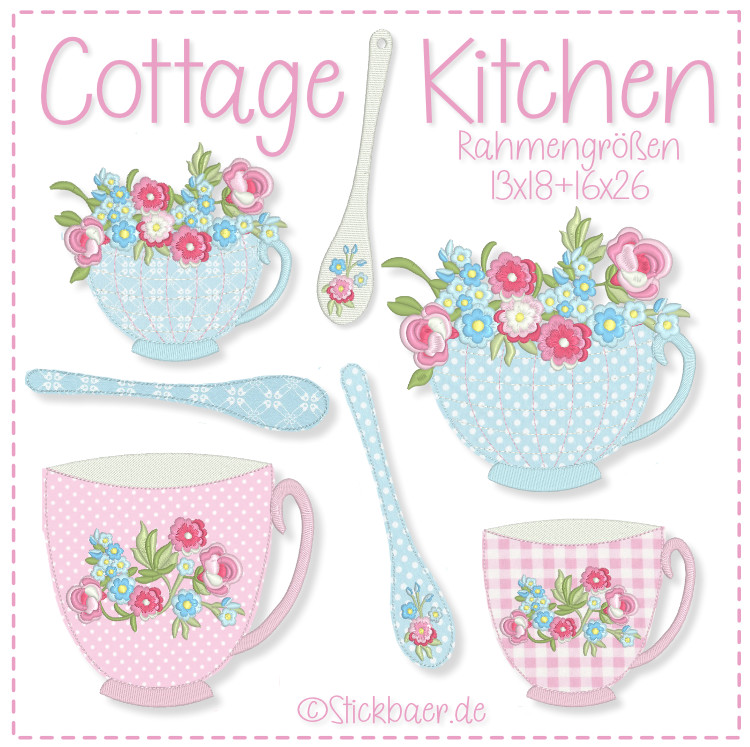How to embroider an appliqué with the embroidery machine

News from Stickbaer
In this post I will show you how easy it is to embroider an appliqué with your embroidery machine. Maybe you haven't dared to try this simple and great technique yet.
What makes appliqué so great are at least 2 things:
- By covering large areas with beautiful fabrics, you can significantly reduce your embroidery time.
- But what makes appliqué so wonderful is the fact that the appliqué fabrics are part of the embroidery design, so it is very easy to influence the look of the embroidery by the choice of fabric.
In embroidery, there are several ways to border the fabric. In addition to the satin stitch, the edges can also be attached with a simple straight stitch. Overhanging edges are allowed to fray a little. This gives such "open-edged appliqués" their special charm.
Using the example of the light blue flower cup from our embroidery file "Cottage Kitchen", I will show you how easy it is to embroider such an appliqué.
First, as with any embroidery file, hoop the stabiliser and the fabric to be embroidered.
And off you go: Embroider the first sequence, a simple border in the shape of the cup.
This is where the fabric will be later.
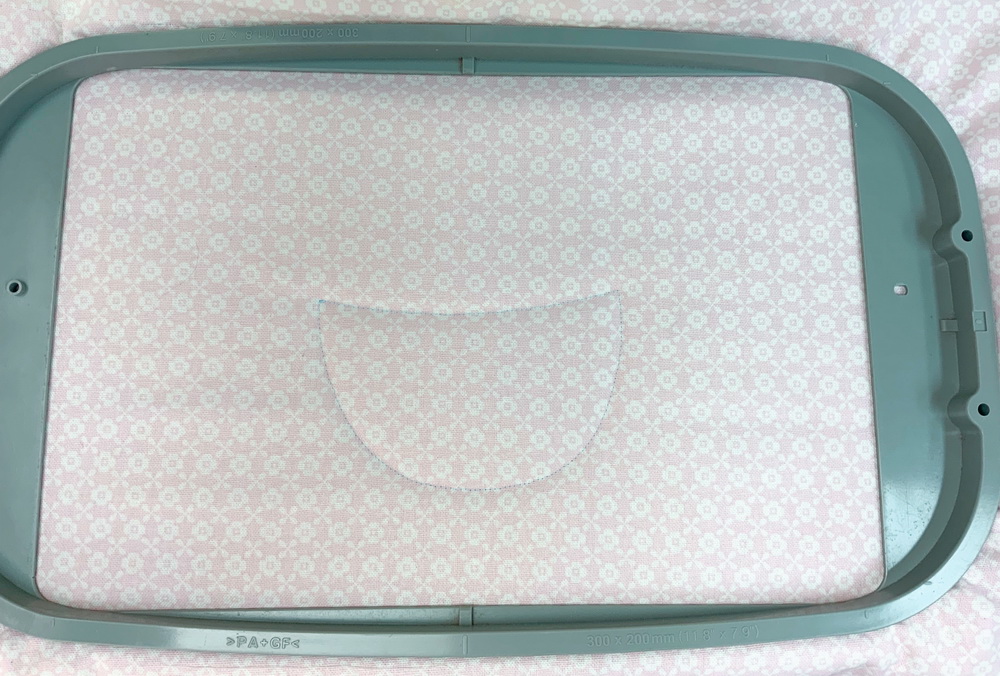
To do this, place the fabric you have chosen for the cup very generously on the previously embroidered border.
By generous, I mean that the fabric should overlap the embroidered line by at least 1-2 cm in all places. Iron the fabric first so that it lies flat. I generally prefer to use cotton fabrics for appliqués. They lie nice and flat and don't warp.

Now the fabric is stitched in place with the next embroidery sequence. Basically, the embroidery machine does exactly the same thing again, attaching the appliqué to the hooped fabric.
A tip on embroidery thread colours: To make sure the embroidery machine always stops in time to hoop the fabric, cut back the fabric, etc., I have given each of the appliqué steps in the embroidery file a different colour.
Of course, it is not necessary to change the embroidery thread each time. Just use the same thread for the whole appliqué, preferably one that matches the colour of the appliqué fabric.

The applied fabric now needs to be cut back. There are special appliqué scissors, but they are quite large. I find that small curved embroidery scissors are perfect for cutting away the excess fabric neatly.
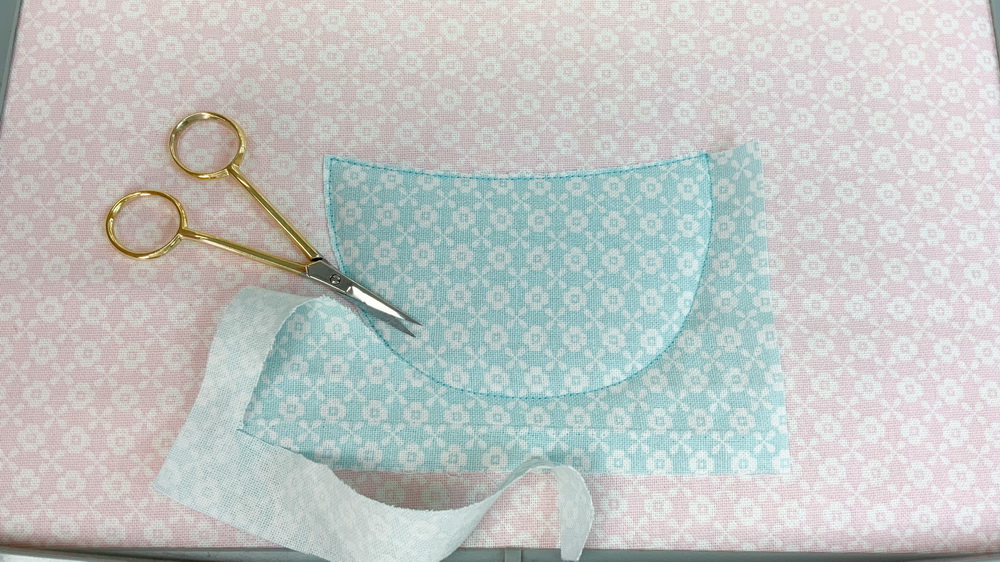
Because the flower cup is an open-edged appliqué, the excess fabric is not cut all the way back to the seam, but is left at about 1 to 2 mm.
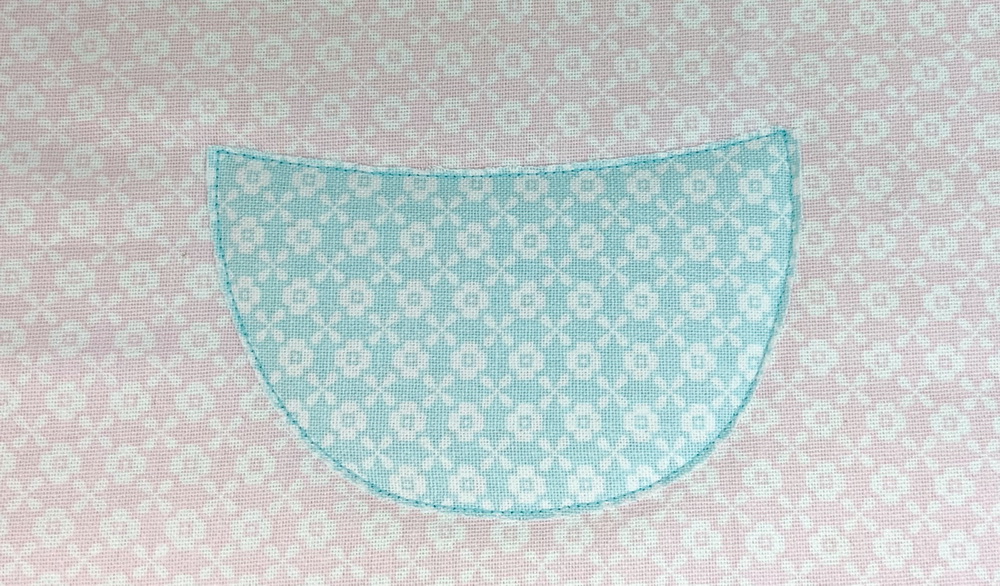
And that's it for the appliqué, the rest is embroidered as usual.
In the case of the cup, this means that the handle and base are embroidered first, in the same colour as the appliqué stitches.
Finally, the whole appliqué is rounded with a slightly thicker straight stitch. This gives the fabric a bit of stability around the edge and looks nice too.
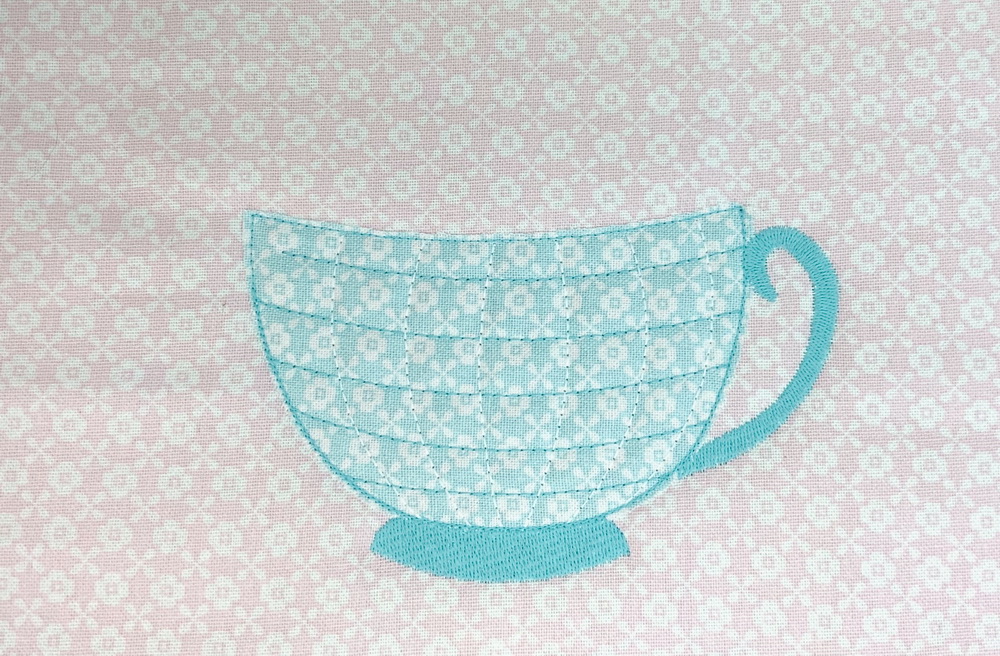
And now for the most beautiful part of the embroidery. Want to watch the flowers grow?
The flower cup is ready to be embroidered. I love watching the embroidery machine stitch petal by petal.
For this type of embroidery and generally all my cottage embroidery files I prefer to use the Frosted Matt from Madeira. It's not glossy and gives the flowers a really great matte look).
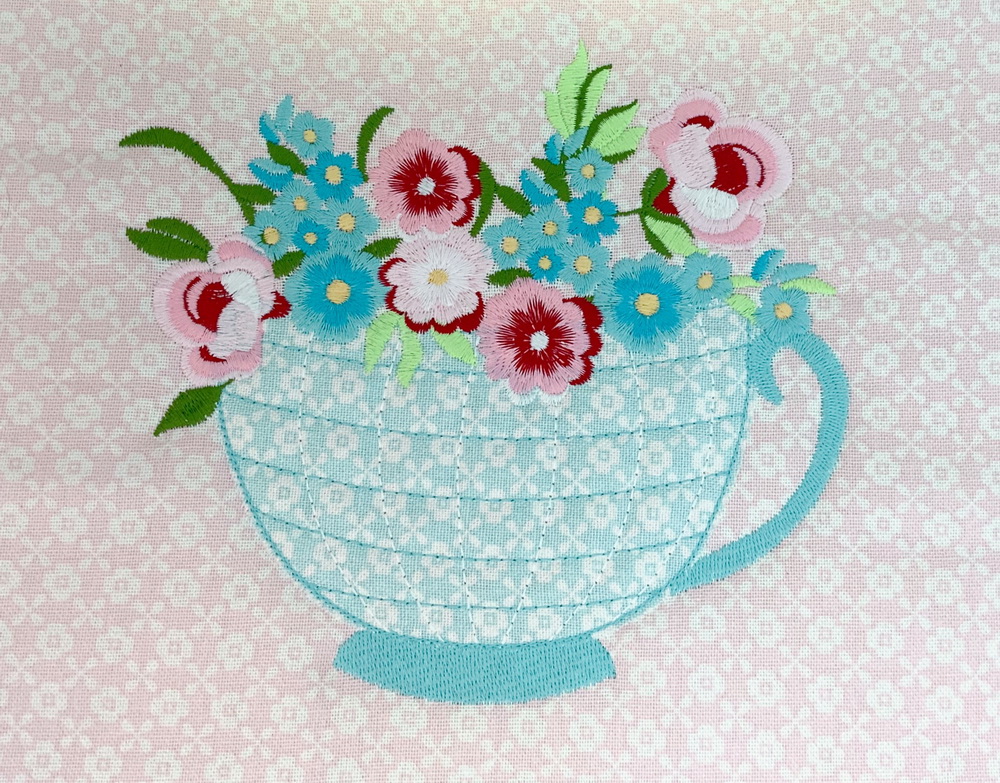
I used the embroidered fabric to make a cushion for our bench. The fabrics are tea towels, by the way, and there are so many wonderful designs you can mix and match that I love using them.
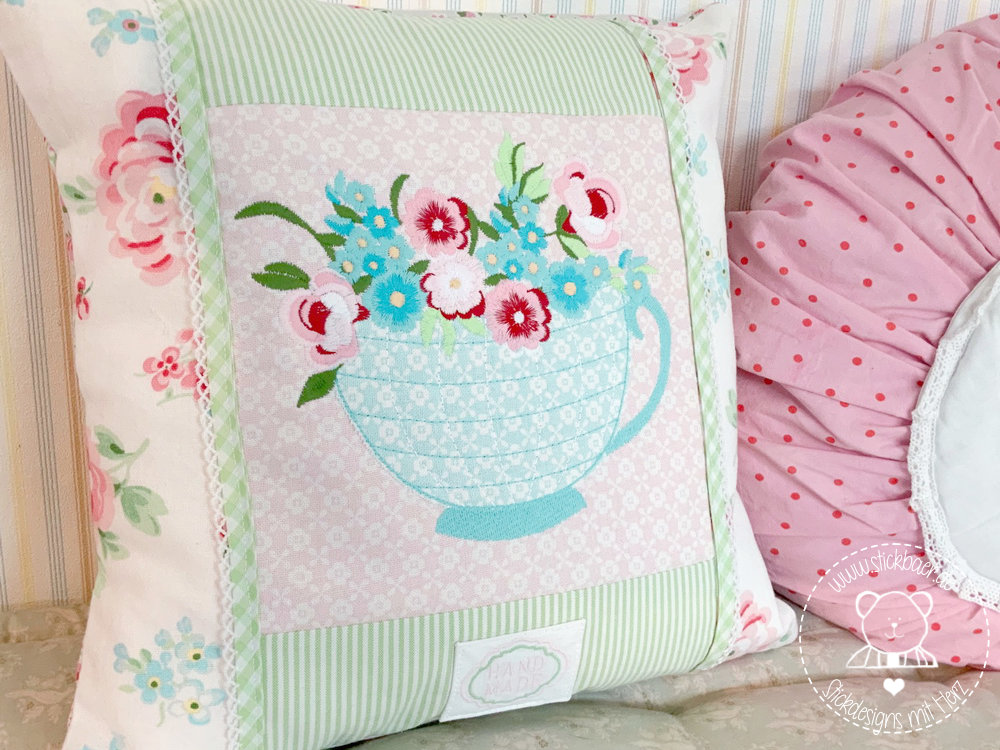
I added a small label to the bottom of the cushion to give it a professional look.
The label is also very easy to make with this embroidery file:
I hope you have fun trying out our new embroidery file and open-edge appliqué.
Your



